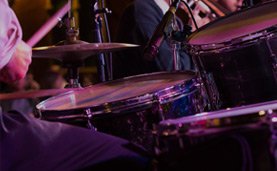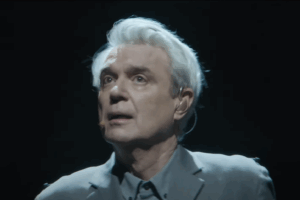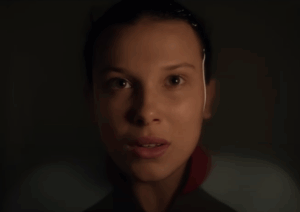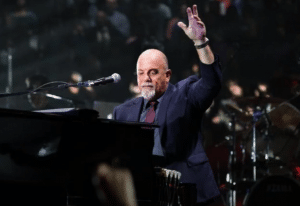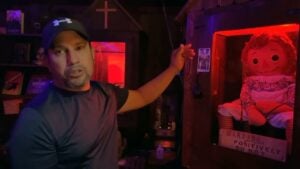The 30 Facts Most Fans Don’t Know About The Police
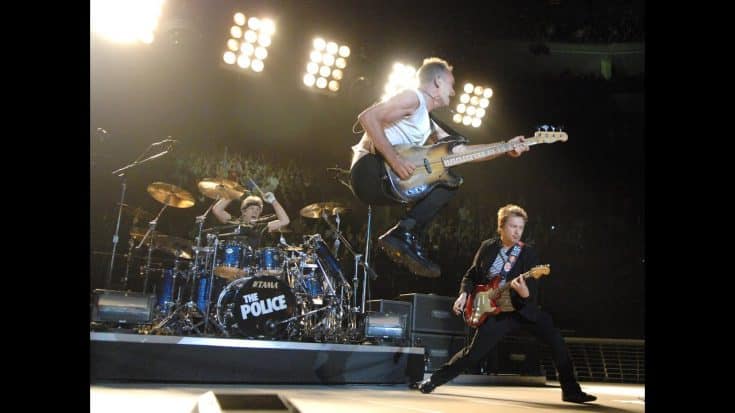
via La Lechita Bailarina / Youtube
The Police‘s album Synchronicity was made at George Martin’s AIR Studios in the Caribbean, similar to their previous album Ghost in the Machine in 1981. However, this time there was tension and disagreements among the band members, almost leading to a breakup. Ultimately, Synchronicity became their final album. Despite the conflicts, producer Hugh Padgham noted that the anger generated incredible energy in the fast songs on side one.
Drummer Stewart Copeland also saw a lot of positive aspects and believed they stayed focused on their goal even when things got complicated. In the same conversation, he admitted:
“We were in paradise, creating our own hell, but in the bitter despond of that trench warfare, we could all hear that this music was fucking great.”
Synchronicity was a huge success. It reached No. 1 in America, selling over eight million copies there. The album had four songs in the Top 40 charts, and a global tour ensured its widespread popularity. “Every Breath You Take” remains their most popular and only number-one single, breaking records even today. Check out 30 lesser-known facts about the making of Synchronicity and the Police.
1. Synchronicity Was Made in Just Eight Weeks
Despite a tough time that almost caused the three members to split, they managed to work well together. They spent six weeks recording the album and two more weeks mixing it. Sting believed their success was due to being prepared, with a routine of having at least 20 songs written and recorded as demos before going to the studio.
2. The Band Got Nothing Done for the First Two Weeks
In an interview, producer Hugh Padgham described a difficult situation while recording an album. He said it took two weeks before they had any songs recorded, and things were going poorly. The band’s manager, Miles Copeland, came to help resolve the situation, and there was a meeting to discuss possibly giving up. Luckily, they decided to continue instead.
3. Sting Was Already Thinking of Leaving the Band
Before releasing Synchronicity, Sting thought about his future and how acting could benefit his career. He believed that changing his public image would help him stay relevant for a long time. In an interview with Rolling Stone in 1982, he said:
“I don’t want to become Barry Manilow or even Rod Stewart. I want to be behind my handiwork, not in front of it.”
4. The Bookshelf Inspired the Album
Sting found inspiration in the works of psychiatrist Carl Jung and Hungarian author Arthur Koestler. Their ideas influenced his albums, including Synchronicity and Ghost in the Machine. Sting underwent Jungian therapy, which helped him creatively and connected to his work. He discovered Jung through Koestler, starting with a book about laughter that wasn’t very funny.
5. Rumors of the Band’s Breakup Were Already Starting
In 1983, while Sting was acting in the movie Dune, there were talks about the Police possibly breaking up. An A&M Records representative said, “Sting is much too hooked on singing to give it up.” The band’s close associates also mentioned that they wouldn’t break up before getting the most out of their success.
6. The Band Was Facing Turmoil
According to Padgham, the producer, there were serious problems between Sting and Copeland during the making of the album Ghost in the Machine in 1981. They had strong disagreements and even physical fights. Andy Summers was also not very happy. Padgham tried to intervene but they dismissed him, saying he didn’t understand their situation.
7. George Martin Was Asked to Help with Synchronicity
Initially, the trio almost broke up due to tensions. The guitarist sought advice from Martin, who encouraged them to resolve their problems themselves, as it’s a common issue in groups. Eventually, they managed to overcome the challenges and continue their work together.
8. “King of Pain” Started Out as a Synth Experiment
At the beginning of “King of Pain,” a xylophone creates a rhythmic sound like a steady heartbeat. As the song progresses, the xylophone transitions to a more lively beat. Initially, Sting had used chords on a small electronic keyboard called a Casio, which had a metallic sound. However, they decided to make it sound more natural by playing the chords on a xylophone instead.
9. Synchronicity Gave the Band Their First and Only No. 1 Album
Thriller battled against Synchronicity on the charts, with Thriller reigning for 19 weeks until Synchronicity took over for 17 weeks. It briefly reclaimed the top spot for a week but was dethroned by Metal Health on November 26, 1983.
10. The Album Kept Selling and Selling After Its Release
In March 1984, Synchronicity sold over five million copies in the US alone, with its singles also achieving million-seller status. Rolling Stone reported that the album continued to sell 36,000 copies per week. Sting expressed his belief that the band’s natural growth would lead to further success, hoping their next album would surpass their previous work.
11. “Mother” Was Written for Andy Summers’ Mom
The Police became extremely popular, which caused problems for Summers. He had a demanding mother who was very invested in his success. He explained to Songfacts:
“I was sort of ‘the golden child,’ and there I was, sort of fulfilling all of her dreams by being this pop star in the Police. I got a certain amount of pressure from her.”
12. “O My God” Is a Throwback to the Police’s Early Days
Sting, known for his songwriting, has a habit of referencing his past work in his songs. In “O My God,” he nods to his earlier band Strontium 90 by borrowing lyrics from their unreleased song “3 O’Clock Shot.” And as if that wasn’t enough, he also includes a quote from “Every Little Thing She Does is Magic” towards the end of the song.
13. Synchronicity Almost Didn’t Happen
Copeland acknowledges Sting’s valuable contributions to the band despite occasional frustration, highlighting his talent for arranging songs and organizing the group. Their strong-willed nature and independent styles created a unique chemistry and tension that cannot be replicated.
14. Yes, They Talked About Yes
Sting’s demo of “Every Breath You Take” had Yes-like elements, including a prominent synthesizer and maybe a Hammond organ. Despite bass and drum disagreements, the group recognized its potential and worked hard to perfect it. The song became their sole No. 1 hit in the US for eight weeks, and Sting later revealed it was written during a tough personal period.
15. Andy Summers Nailed It in One Take
After debating the structure of “Every Breath You Take,” Summers drew inspiration from Bela Bartok’s music for his guitar part. He aimed to add a cool touch to each chord, giving it the iconic Police sound. When he played it, the control room erupted in cheers after a brief moment of silence.
16. ‘Every Breath You Take’ Was Misunderstood
Sting was surprised by how people reacted to “Every Breath You Take,” but he eventually accepted it. He thinks the song is about spying, control, and envy, but many people see it as a romantic song. Also, he believes songs should have multiple meanings, which makes music special.
17. Copeland Thinks ‘Every Breath You Take’ Could Have Been Better
In a 2020 interview, the drummer called Sting’s song the band’s best but poorly arranged. He credited Summers’ guitar for saving it and thought other bands could have done it better. Despite its success, he saw the lack of rhythm as a missed opportunity for their band.
18. But Everyone Knew It Would Be a Hit
Producer Padgham recalled listening to the demo of “Every Breath You Take” in late 1982. He, along with Sting, Copeland, Andy, and their manager Miles, were amazed by it. Miles confidently declared it a surefire hit and told Padgham not to mess it up. Padgham believed that even if his dog had produced the song, it would still have become a hit.
19. ‘Murder by Numbers’ Was a One-Take Wonder
During an interview, Copeland revealed that “Murder by Numbers” came together swiftly. Summers played jazz chords on his guitar during dinner, sparking inspiration in Sting, who had lyrics ready. They headed to the studio, with Copeland’s drums already set up. Without rehearsal or discussion, they recorded the song in one take, capturing the spontaneous energy of their initial performance.
20. The Three Were in Separate Rooms
The Beatles had many choices for recording at Martin’s fancy AIR Studios in the Caribbean. This was helpful for “social reasons” because the band was not getting along well. Copeland was near the dining room, Sting recorded his bass in the control room, and Summers was in the live room downstairs.
21. Stewart Copeland Recorded His Parts in a Hurry
In the early days, the Police collaborated closely, but that changed for their last three albums, including Synchronicity. Copeland said they quickly figured out songs like “Tea in the Sahara” and usually recorded the second take. The other band members didn’t mind small mistakes and just wanted to add their parts and leave the studio. Copeland’s original drum recording, with its imperfections, stayed while the rest of the band redid their parts.
22. The Album Cover Has a Lot of Variations
The album cover has various photos with colored overlays. There are different versions of the cover, with around 40 or possibly 93 variations. Collector Jay Matsueda explained the differences and shared a fan documentary featuring the rare Police catalog items, including the Synchronicity album cover.
23. Sting Had His Own Ideas for the Artwork
Sting wanted the album cover to be a surprise, so he told each band member to take their own photo without telling anyone else. Sting took his photo at the American Museum of Natural History in New York. In the picture, he is surrounded by different types of skeletons, like dinosaurs.
24. An Oboe Brought ‘Tea in the Sahara’ to Life
Despite reducing their lineup to the core trio in the album Synchronicity, they didn’t stop experimenting. Sting took up the challenge of learning the oboe within a short time, surprising Copeland. The drummer expressed his amusement, saying:
“I swear to God, the guy gets an oboe, which is a very, very talented challenging instrument, mostly sounds horrible — but he kind of got the hang of it, as he does. He pulls it out in that song there and starts honking on that thing.”
25. The Track Listing Was Almost a Coin Toss
During album mixing, song selection posed a challenge. To avoid exclusion, flipping a coin was considered. However, Copeland and Summers worried about their songs. The guitarist suggested separating softer and energetic tracks, which Sting endorsed. This approach led to Synchronicity’s successful completion.
26. Sting Wanted the Band to Sound Original Again
Sting felt the Police were at a crossroads for their fifth album. They wanted to sound different from the imitators, so they removed familiar elements and toned down reggae influences. Synchronicity emerged as a more refined and polished record.
27. Synchronicity Was Nominated for Five Grammy Awards
The Police had a successful year at the 1984 Grammys, winning three out of five nominations. Synchronicity won Best Rock Performance by a Duo or Group with Vocal, and “Every Breath You Take” won Song of the Year and Best Pop Performance by a Duo or Group with Vocals.
28. Be Kind, Rewind
The 1983 Synchronicity tour featured two performances in Atlanta, filmed and recorded for a concert video. Godley & Creme, known for handling music videos, directed the filming. Originally released on VHS in 1984, a DVD edition followed in 2005.
29. Sting Made a Mint Off of One Song
Due to illegally sampling “Every Breath You Take,” the royalties for Puff Daddy’s Grammy-winning song “I’ll Be Missing You” go directly to Sting. He earns an estimated $2000 per day and around two million dollars annually. Diddy initially mentioned $5000 per day but later claimed he was joking.
30. The Band’s Final Concert Was Soon After
Despite foreseeing the moment, the members struggled to accept that their live performances as the Police were over. Their final classic-era concert took place in Melbourne, Australia on March 4, 1984. After experiencing massive success, Sting boldly suggested they end on a high note. Although there was more potential, Copeland and Summers didn’t resist. However, they eventually reunited for a successful tour in 2007.
https://www.youtube.com/watch?v=reK0S5O_gSI



